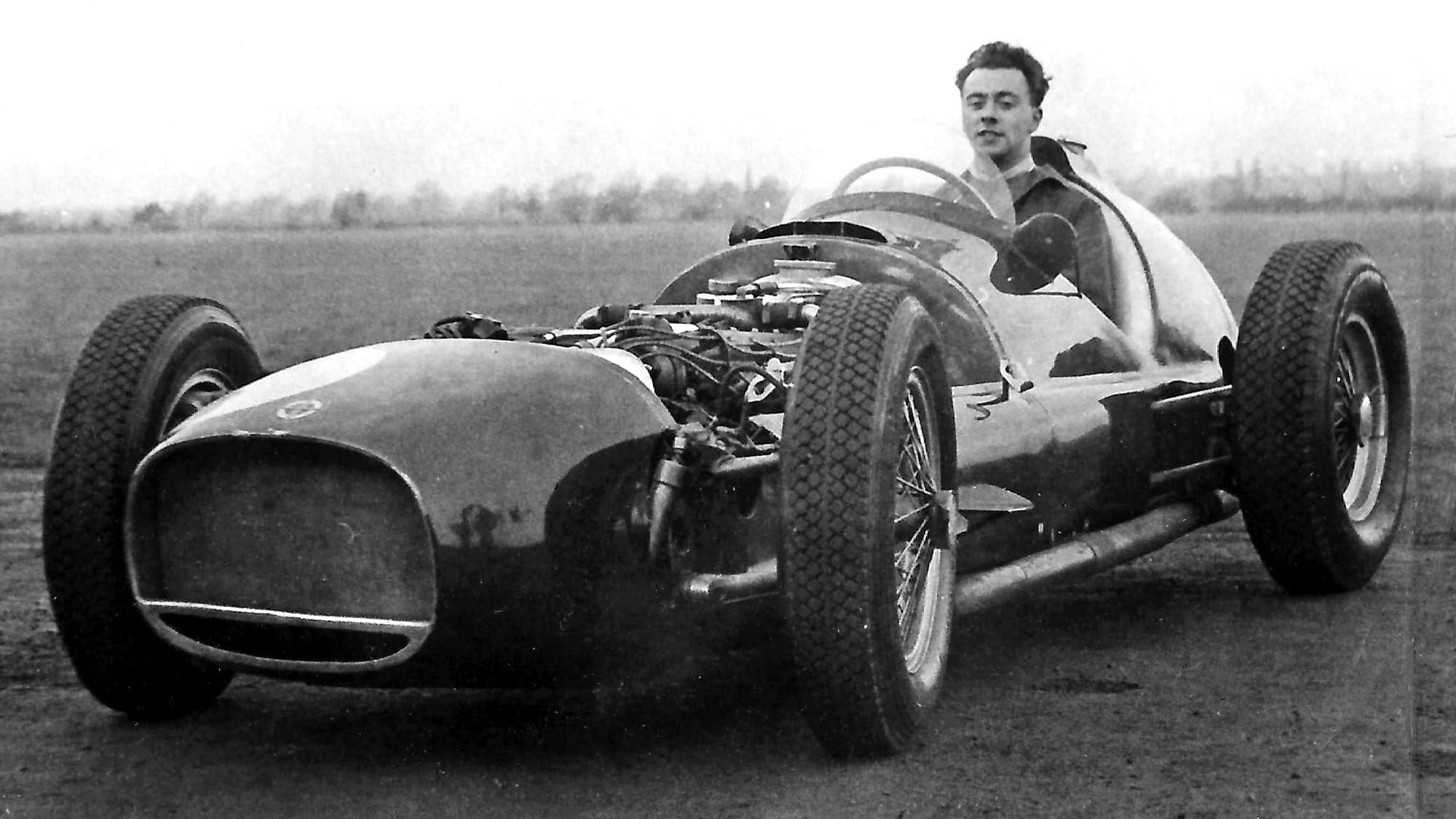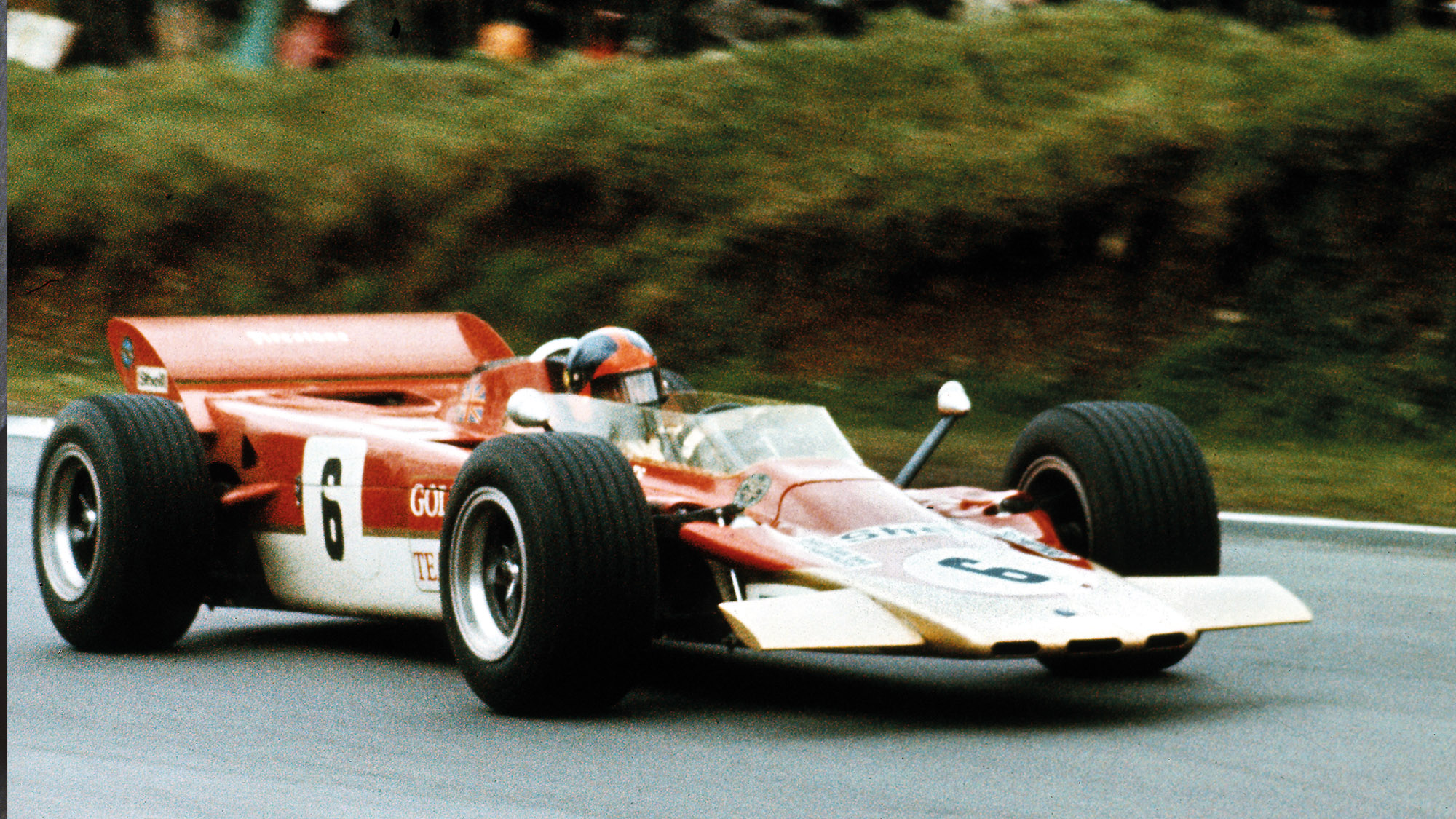Murray Walker remembered: Letters, May 2021
For many of us who were fans of Formula 1 he was the voice and the embodiment of motor racing, which started in 1949 and ended in 2001. I refer of course to the sad news of Murray Walker’s passing. Born in Birmingham, he was one of our own.
From his memorable partnership with the late James Hunt to his infamous ‘Murrayisms’ he was truly a great gent. His passionate yawp and yowl style of commentary was unmistakable to a generation. Indeed, who can forget his famous remark, “I’ve got to stop now because I’ve got a lump in my throat,” when Damon Hill won in Japan, thus securing the World Championship.
Less well known was his service during the war when he was commissioned into the Royal Scots Greys and took part in the push from Normandy to the Baltic.
On a personal note, I shall remember the Murray Walker I met 11 years ago in Birmingham when I was working on a charity project and he added his support and generously donated a signed copy of his coffee table-sized book to sell to raise funds which he readily did without me even asking.
Thanks for the memory, Murray.
Mark Dabbs, Great Wyrley, W Mids

No grand prix driver but our correspondent Don MacLean trying out the V16 BRM’s cockpit
I enjoyed your BRM V16 article and splendid cutaway drawing [Forever England, February]. In the 1950s I was a student in the Automobile Department at Loughborough College, and one day Sir Alfred Owen arranged to bring a BRM grand prix car for the students “to have a look at”. The delivery driver was a bit doubtful about this, imagining that it would disappear under a scrum of students and when they departed there would be just a few nuts and bolts lying on the ground. For this reason he took the bonnet away with him. I am left with a lovely memory of that day, and the photo [above] of me sitting in the car.
Don MacLean, Clifton upon Teme, Worcs
I was deeply saddened to hear the news of Murray Walker’s passing. His high-octane, fast-paced commentary and infectious energy made even the dullest of races a joy to watch. I was fortunate enough to meet Murray at a book signing for his first autobiography, post-retirement (not that he ever fully retired). Completely starstruck,
I was rendered speechless in his presence. Sensing my embarrassment, he mitigated the situation by simply saying, in that oh so familiar style and tone: “Thank you, young man. Good evening!” A class act. Thank you, Murray. Rest In Peace.
Richard Newell, Solihull, W Mids
I can’t believe Murray’s start-watch has finally stopped. Murray was a big part of the reason for my enthusiasm for motor racing. Right from the time I started to become interested in the late 1970s, through the ’80s and ’90s Murray was motor racing; whether it was F1, bikes, rallycross or whatever it just didn’t sound right without his unique commentary to describe it.
I was lucky enough to get to say hello to him at the Goodwood Festival of Speed in 2016 and I’ve never been more starstruck by anyone before or since. On that occasion Murray was accompanied by a minder, required not so much to stop us from talking to him as to ensure that he didn’t talk to us for so long that he missed his next appointments. Whoever said that you shouldn’t meet your heroes had obviously never met Murray Walker.
Murray will be very much missed, and I don’t think his contribution to British motor racing can be overestimated. Our thoughts are with his family and his many friends, Godspeed, Murray.
Mark Bowley, Whitwick, Leicestershire
Chris Craft, who died in February, has left us with many great memories, including this one from 1966. He arrived very late on the grid at Brands Hatch for a BRSCC race, and wove his way from the back through to his position. Moments before the start his car caught fire, with flames underneath beginning to spread.
A marshal pulled open the driver’s door to rescue him, but Chris pushed him away and shut it. Then he realised there was a fire, and leapt out. He said afterwards he thought the marshal was trying to stop him racing because he should have been at the back of the grid. No doubt the stewards wouldn’t have thought this an acceptable explanation, but it does show just how committed Chris was. I was eight at the time, and vividly remember the drama, from a few feet away at the edge of the track.
Before he turned professional, Chris worked in the Ford of Britain PR office at Brentwood. He told me that at work one Monday morning ‘the guv’nor’ (my father, Walter Hayes) came to see him holding a local newspaper report and asked if he was the C Craft who had won a saloon car race on the previous weekend, beating Anglias in a Jaguar. Chris admitted that he was, expecting to be fired, but Walter said, “In that case you shouldn’t be working for Ford in an office, you should be racing for Ford.” And so he did.
Richard Hayes, Oxford

Emerson Fittipaldi whooshes into history in his Lotus 56B, the first turbine-powered grand prix car, at the Race of Champions, Brands Hatch 1971
It was nice to read Andrew Frankel mentioning the restoration of the Lotus 56B turbine car [Andrew Frankel column, February]. It is hard to believe that, as I write this, it is half a century almost to the day that I stood at Paddock Hill to witness this car’s Formula 1 debut in the 1971 Race of Champions. It whooshed past me almost silently with a complete lack of drama – unlike the flat-12 of Clay Regazzoni’s Ferrari 312B2 (also making its debut) and the BRM V12s. The car had yet to have its sides bulged to accommodate the extra kerosene needed for a full length GP.
I hope the car is restored to Gold Leaf colours rather than the horrid black and
gold of ‘Worldwide Racing’ – a legal ploy to prevent seizing of assets from Team Lotus in Italy following Rindt’s accident of the previous year.
The 56B had large brakes but needed them as on tick-over it could lap Silverstone at 80mph. However the engine, only required a Hot Section Inspection every 1800 hours and had a Time Between Overhauls of 3600hours – how many seasons is that?
The real Lotus story from the Race of Champions that year was that Tony Trimmer had been promised a run in a 49 but due to engine issues this was switched to a 72 while Fittipaldi ran the 56B. However, this 72 would become Fittipaldi’s regular race car and Chapman and Fittipaldi did not want to risk it being damaged. So the mechanics were instructed to disconnect the alternator. The unknowing Trimmer was lucky to manage the five laps that he did before the battery ran flat.
Dr Peter O’Donnell, Epsom, Surrey
I have just been watching the horse racing from Cheltenham and I was rightly impressed by the commentator, who at the start of the race described each rider by the colours being worn and then, throughout the race, continued to identify the horse and rider and pointed out the colour of the silks that the jockey was wearing. So it was easy to follow for someone not well connected to the sport.
What a contrast to motor racing. Invariably the commentators only refer to the name of the driver, and obviously expect the viewing public to understand. This year’s F1 has seen many changes of driver and their cars, so we now need to re-learn last year’s identities and change to this year’s. I’m already confused!
David Croft on Sky is the worst offender. He gives no indication of which car he is talking about, just the driver’s name. It will, no doubt, satisfy the purists but it will not attract new viewers who, I suspect, will watch for a few minutes, then switch channels. It’s the same all over motor sport. Le Mans, Formula E, Porsche Cup, etc.
Jackie Stewart got it right. “The red car on your screens now is a Ferrari driven by Michael Schumacher.” Clear, precise and informative. If only other motor sport commentators would take a leaf out of Sir Jackie’s book, and aim to give us, the viewing public, better information.
Nick Argent, Northwich, Cheshire
Reading through your interesting article on the stillborn McQueen film project [McQueen’s lost movie, February] I was struck by the dismissive tone taken towards the film Grand Prix. Then it occurred to me: it was being said by people who have never seen the film. Oh, yes I have, many will say: I disagree. Few have.
Grand Prix was a Cinerama film, meant to be seen on a huge screen offering a 146 degree field of view. The largest British Cinerama screen was, I believe, 25m x 9m. Much bigger than the most generous cinema or large screen modern TV, much less your smart phone. But the smaller US size for Cinerama screens was 26m x 10m; the larger, 32m x 11m. This, plus the fact that Cinerama was also created with a seven-track magnetic sound system then quite beyond the reach of any standard theatre sound system – much less home systems. The experience of seeing this film in its correct venue was breathtaking.
So saying you have ‘seen’ Grand Prix, if in a standard theatre setting or home theatre, is the equivalent of comparing a go-kart track to the Nordschleife. Sadly, there are but a handful of true Cinerama theatres still extant, but it can be hoped that a time will come where the ‘roadshow’ (i.e. full-length) version of this great film will yet again brighten the screen – and opinions.
